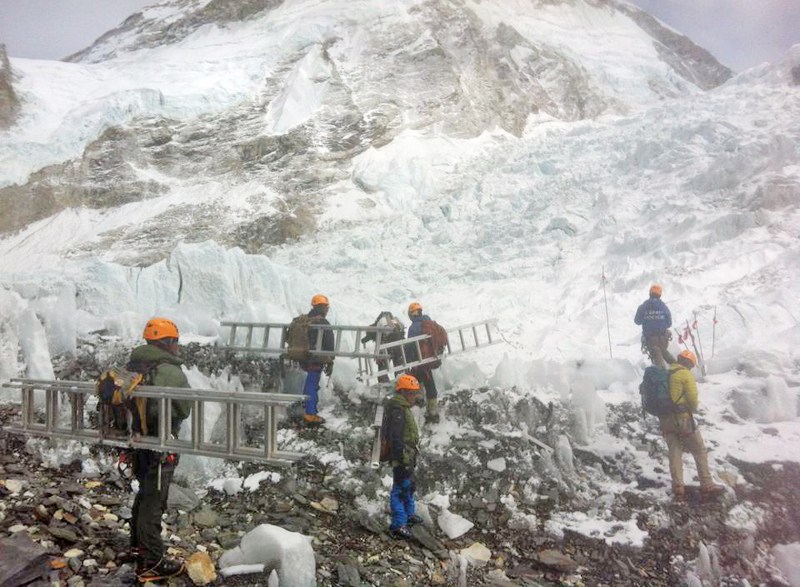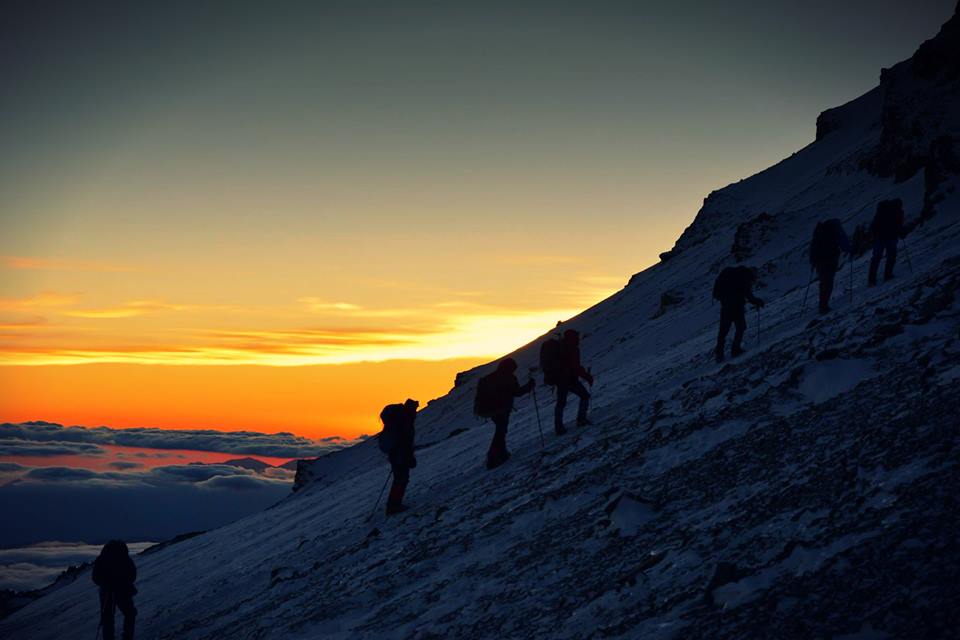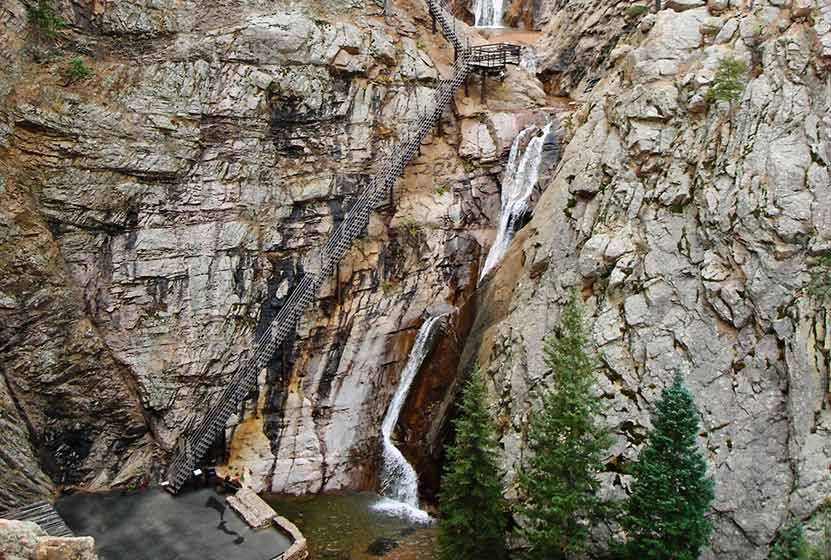If you ask enough top executives about their leadership style, you’re likely to hear a number of them say, “I hire the best people and get out of their way.” It’s a good line that makes sense at a certain level. Hiring the right people is the most important part of building a strong team, of course, and delegating to give people more autonomy is a powerful motivator.
But managing a team is not that simple. Leaders have to play a far more hands-on role to make sure the group works well together and remains focused on the right priorities.
There are six main drivers for creating a strong culture of teamwork – the things that, if done well, have an outsize impact. And the insights are applicable to any team or organization, from five people to 500,000.
Create a Clear Map
Leaders owe their teams an answer to the same question that young children often ask their parents before setting out on a long drive: “Where are we going and how are we going to get there?” In other words, what is the goal and how are we going to measure progress along the way?
And that may sound simple, but it is often one of the greatest challenges that teams, divisions and companies face. What does success look like? If you were to set up a scoreboard to track success over time, what would it measure?
The trouble often starts when leaders start listing five or seven or 11 priorities. As Jim Collins, the author of the best-selling management books “Good to Great” and “Built to Last,” is fond of saying: “If you have more than three priorities, you don’t have any.” Determining these priorities and how they’re going to be measured is arguably the most important job of a team leader because most of the work that everybody does will flow from those goals. Those priorities have to be lined up as carefully as the trajectory of a rocket launch, because even the slightest miscalculation can take a team off-course over time.
Have a Shared Scoreboard
Another benefit of having a simple plan is that it creates a shared goal that will offset the tendency of people to identify themselves as part of smaller groups. Think of a football team, for example. There are many “tribes” within a team – offense and defense, linemen and receivers, running backs and defensive backs. But because the goal of the team is clear, and there’s an external scoreboard to track progress, there is a greater sense of “us” on the team than the “us and them” dynamic that can often divide colleagues in companies.
“Metrics are actually the way that you can harmonize a large number of people, whether it’s dozens or even thousands,” said Adam Nash, the former chief executive of Wealthfront, an online financial management firm, who is now an executive in residence at Greylock Partners, the venture capital firm. That way, he added, “when they’re on their own and making their own decisions, they can be empowered to make those decisions because they know they’re aligned with the rest of the company.”
In the absence of that simple, shared scoreboard, people will make up their own ways to measure their success, Mr. Nash added.
"If you have a company where everyone has their own ways of keeping score, you’ll get incessant fighting and arguments, and they’re not even arguing about what to do,” he said. “They’re arguing about how to keep score. They’re arguing about what game we’re really playing. That’s all counterproductive.”
You May Feel Like a Broken Record...
Once you have a simple plan, you have to keep reminding your team of the priorities, even if it can feel repetitive. People often have to hear something a few times before they truly remember it. Marc Cenedella, chief executive of TheLadders.com, a job search site, shared a good rule of thumb:
"You say something seven times and they haven’t heard you,” he said. “Until they start making jokes about how often you repeat it, they haven’t internalized it.”
Rules of the Road
You’ll need a set of values, behaviors and cultural guardrails so that everybody knows how to work together.
Create Your Team's Culture
All families have values, even if they aren’t discussed explicitly. There are certain behaviors that are encouraged and discouraged — like rules of the road — for how everyone is going to (try to) get along and spend their time.
Teams aren’t really that different. Pull together a group of people to work on any project, and they will develop a culture of their own, and it will be as unique as the people in the group.
As a leader, you can take a laissez-faire approach and hope the team meshes well over time. Or you can look for opportunities to set some shared guidelines for how people will work together.
There are no hard and fast rules for developing the cultural values of a team. In some cases, the founder of a company will issue them to employees. In others, top executives will turn the exercise over to employees to make it a bottom-up effort.
...And Stick to It
The most important thing is for the team or company to live by their stated values, rather than just going through the motions of the exercise, with people earning promotions even though their behavior runs directly counter to the stated rules of the road.
“I think it’s easy for people at many companies to become cynical, which then leads to politics, which can create a cancer that can topple even the greatest companies,” said Kathy Savitt, managing director at Perch Partners, a consulting firm.
A couple of other traps to avoid:
Don’t make your lists too long. Most people can’t remember more than three things day-to-day, and the lists don’t need to somehow address all potential human behavior, good and bad. Just focus on the things that feel unique to the group or organization, and are good reminders to keep everyone aligned and moving forward.
Specific is better than vague. Many lists of values share similar words, like excellence and integrity, but those broad notions can create problems of their own, said Michel Feaster of Usermind, a customer-engagement software firm. “The problem with values like respect and courage is that everybody interprets them differently,” she said. “They’re too ambiguous and open to interpretation. Instead of uniting us, they can create friction.”
Show a Little Respect
If team members don’t feel respected, they won’t be motivated to bring their best ideas — and their best selves — to work.
The Effects of a Bad Boss
Unfortunately, most of us have worked for at least one bad boss (and sometimes many of them) over the course of our careers.
They often share many of the same bad tendencies. They don’t listen. They micro-manage. They’re not trusting. They are unresponsive. They see employees only as pawns to help them accomplish their goals. They point fingers rather than owning their mistakes. They steal credit for the team’s accomplishments. They dress people down in front of their colleagues. The list goes on and on (sigh).
That kind of treatment puts people in a defensive crouch and they start subconsciously checking part of their self-image at the door before they go into work. And it means that if they have an out-of-the-box idea for the team, they may think twice before sharing it, out of fear it will be dismissed. In this kind of environment, innovation is hard, if not impossible.
Set the Tone
It is incredibly important for leaders to set a tone, and model the behavior, that everyone will respect one another.
Robin Domeniconi, chief executive of Thread Tales, a fashion company, told me at the time of our interview that she used the expression “M.R.I.” as a cornerstone of culture.
M.R.I. means the ‘most respectful interpretation’ of what someone’s saying to you,” she said. “I don’t need everyone to be best friends, but I need to have a team with M.R.I. So you can say anything to anyone, as long as you say it the right way. Maybe you need to preface it with, ‘Can you help me understand why you don’t want to do this, or why you wanted to do this?’”
John Duffy, chief executive of the mobile-technology company 3Cinteractive, said he established a zero-tolerance policy for disrespectful behavior.
"We have absolutely clear discussions with everyone about how respect is the thing that cannot be messed with in our culture,” he said. “When we have problems with somebody gossiping, or someone being disrespectful to a superior or a subordinate, or a peer, it is swarmed on and dealt with. We make everyone understand that the reason the culture works is that we have that respect. There is a comfort level and a feeling of safety inside our business.”
It's About the Team
A team is stronger when everybody delivers on their individual roles.
Accountability Goes Both Ways
Treating people with respect is part of a two-way street to help foster teamwork. At the same time, leaders also need to hold everyone on their team accountable for their work and role on the team. In effect, it’s a simple bargain that leaders can offer their employees: “I’ll treat you well, but we’re also going to be clear about the work you’re expected to contribute.”
At many companies, this culture of accountability is discussed explicitly. “I hold people accountable for everything that comes out of their mouth,” said Steve Stoute, chief executive of Translation LLC, an advertising and marketing firm. “Don’t say you’re going to do something and not do it, because in a company of this size, everybody is directly responsible for the person next to them.”
If You Say It, Do It
Brett Wilson, chief executive of TubeMogul, a video advertising software company, uses a smart phrase to signal the importance of being reliable at this company.
“It’s a culture where we value the people who do what they say — they have a high ‘do-to-say ratio,’” he said. “You just need people who follow through, and it’s a lot more fun when the people you work with do that. You can count on them, and you can get by with fewer layers of management, and communication flows faster.”
Tobi Lütke, chief executive of Shopify, an e-commerce software company, developed a clever metaphor of a “trust battery” to signal to employees that everything they do can help or hurt their reputation for reliability.
“Every time you work with someone at the company, the trust battery between the two of you is either charged or discharged, based on things like whether you deliver on what you promise,” he explained. “Humans already work like this. It’s just that we decided to create a metaphor so that we can talk about this in performance reviews without people feeling like the criticisms are personal.”
Have Conversations
Difficult discussions aren’t anyone’s idea of fun — but they are necessary for running a successful team.
Stay On Your Side of the Net
A big part of holding people accountable for their work is a willingness to have frank discussions about problems and misunderstandings that inevitably arise among colleagues.
But the fact is that most managers go out of their way to avoid these “adult conversations.” It’s understandable. They can be unpleasant, and most people would rather deliver good news instead of bad. Also, you never quite know how somebody’s going to react to feedback. That is why problems are often swept under the rug, and maybe dealt with months later in an annual performance review.
One of the smartest tips for having such conversations is to make sure you “don’t go over the net.”
It means you should never make statements that include assumptions about the motivations behind someone’s behavior. Instead, you should stay on your side of the net and talk only about what you’re observing and your own reactions and feelings. That way, it’s harder for people to get their back up because you’re not devising rationales to explain someone else’s behavior.
Consider, for example, the small but important difference in approaches in the following paragraph:
- "I’ve noticed you keep showing up 20 minutes late, and it seems like you don’t care." The boss has gone over the net here and accused the person of not caring.
- "I’ve noticed you keep showing up 20 minutes late, and it makes me feel like you don’t care." Here, with just a small language tweak, the boss is staying on the right side of the net, and avoided an overheated conversation because the employee can’t argue about how someone feels.
This approach was first described to me by Andrew Thompson, the chief executive of Proteus Digital Health, who said he uses it as a counterweight to a natural tendency of human beings.
“People concoct all this imaginary garbage about why the person is doing this to them when in fact the person may not even realize that they’re doing anything,” Mr. Thompson said.
Set Expectations for Feedback
How often people give feedback is just as important as how they deliver it. Some leaders tell their employees upfront that they are going to give them frequent feedback. That way, employees are not so alarmed when the feedback comes, and they’re more open to hearing it and acting on it.
“A lot of bad patterns happen when you go for really long periods without giving people feedback, and it just bottles up,” said Seth Besmertnik, chief executive of Conductor, a search engine optimization company. “They’re so used to not getting any feedback that when they get it, it’s this huge deal. If you get into a rhythm of giving feedback, they get used to it.”
He added: “Having those good conversations is really 80 percent of being an effective manager.”
The Hazards of Email
This last point may not seem as big a deal as the others, but email can have a corrosive effect on culture.
The problem starts because emails often lack the tone and context to clearly signal what the sender is thinking. So a straightforward email can get misinterpreted, create anxiety or trigger an angry response. As a result, email can often damage the connective tissue that forms relationships among colleagues rather than help build it up.
“If there’s a conflict and you need to resolve it, you cannot really do it in an email because people don’t know tone,” said Nancy Aossey, chief executive of the nonprofit International Medical Corps. “They don’t know expression. Even if they like you and they know you, they might not know if you were irritated or joking in an email.”
The problems really begin when people start an argument over email, she added: “Arguing over email is about having the last word. It plays into something very dangerous in human behavior. You want to have the last word, and nothing brings that out more than email because you can sit there and hit ‘send,’ and then it just kind of ratchets up and you don’t have the benefit of knowing the tone.”
Many leaders are aware of the dangers of email, and are explicit about the rules they expect people to follow. For example, a disagreement should never extend beyond two emails. After that, you have to pick up the phone, or do something potentially out of the ordinary — get up from your desk and go talk to your colleague in person.
Simple ... in Theory
If there is one overarching theme that threads through most of the points covered in this guide, it is that most problems on teams can be solved by colleagues being up front with each other, and having respectful, frank conversations face-to-face.
That sounds simple, but just as with the art of distilling complex goals into a clear, three-point strategy, simple is often very hard.







 The exhibition catalogue, published by the Princeton University Art Museum and distributed by Yale University Press, illustrates each of the works on view and affords a revelatory examination of the role of literature in the development of Frank Stella’s artistic practice.
The exhibition catalogue, published by the Princeton University Art Museum and distributed by Yale University Press, illustrates each of the works on view and affords a revelatory examination of the role of literature in the development of Frank Stella’s artistic practice.



